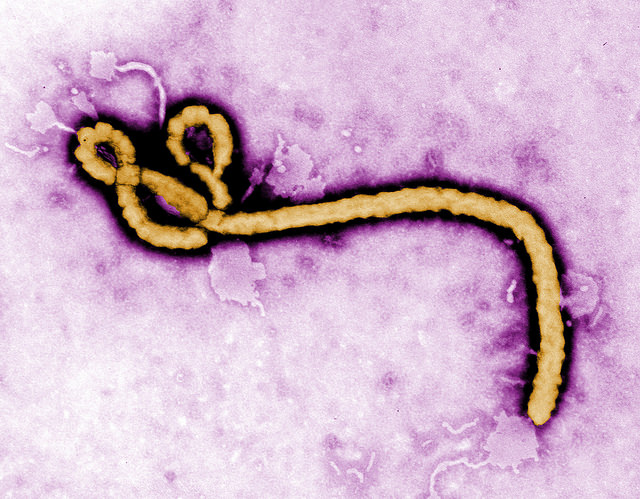A 15-minute paper test from the Corgenix Medical Corporation has recently been approved by the World Health Organization (WHO) as the first quick method for detecting Ebola in patients. In light of the Ebola emergency, the test was evaluated under the WHO’s Emergency Assessment and Use protocol, which involves less rigorous testing procedures.
Current detection methods that are performed in special labs under high regulation and analyses can take 12 to 24 hours to complete. A stationary lab also requires health-care workers to send in samples for testing and laboratory couriers to traverse dangerous terrain. This new test, called the ReEBOV Antigen Test, doesn’t require electricity and is “very similar to a pregnancy test,” according to Doug Simpson, President and CEO of Corgenix. “A drop of blood is placed on the paper, and if two lines appear, then it’s positive for Ebola” (NPR, Michaeleen Doucleef).
The test isn’t as accurate as the more rigorous lab tests — according to the WHO, only 92% of people with Ebola and 85% without Ebola were identified compared to the current tests. 15% of people also tested false-positive, meaning they were incorrectly identified as being infected with Ebola. Furthermore, since the test still requires a blood sample, the test will have to be performed in the confines of a biosafety cabinet, restricting its portability. However, since speed is of the essence in identifying and treating Ebola patients, this rapid test may be a boon to treatment facilities in remote areas. The first shipments of the test to Africa are scheduled to take place in the next two weeks, pending FDA approval.
Image source: Andy Cross
A team from MIT and the Harvard Medical School led by Lee Gehrke has also developed its own 10-minute paper test that simultaneously identifies dengue and yellow fever, both of which are potentially fatal, mosquito-transmitted viruses, in addition to Ebola. This test utilizes antibodies attached to triangular nanoparticles that exhibit size-dependent optical properties. Antibodies are proteins released by the immune system that neutralize harmful invading substances by binding to identifying markers called antigens. When a sample is drawn through the paper, the attached antibodies latch onto viral proteins, pulling up the nanoparticles and creating colored lines that indicates the disease(s) present. The test currently costs $2 and requires no special equipment or trained personnel to use it. Gehrke’s team is also considering developing an app to add a time and geographical stamp to each test to track the progression of the diseases. The research publication can be found here.
Feature Image Source: Ebola Virus by CDC Global










